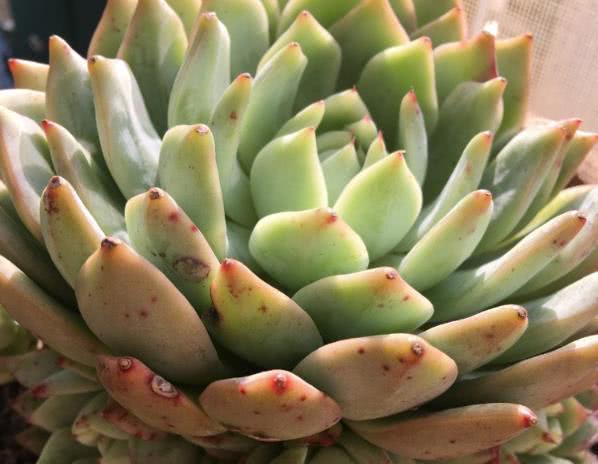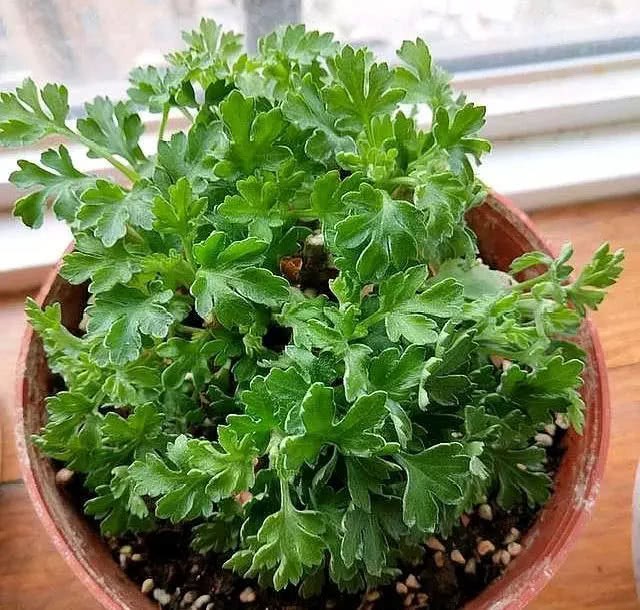The powder on the leaves of succulent plants is of great use. Can it be regenerated if it falls?

The powder on the leaves of succulent plants is very good-looking, and has a certain effect on the growth of succulent plants. The white powder of succulent plants is a protective layer, which can reduce the light intensity. However, there is one thing to note about the powder on succulent leaves: the white powder on the leaves is easy to touch off.
The powder on the leaves of succulent plants can reduce the loss of water in the leaves. Have you found that succulent plants without powder are more likely to sunburn and soften their leaves due to excessive water loss than succulent plants without powder? Sometimes we will buy those varieties with flour, so try to support the outermost leaves in the process of soil removal or planting, which can reduce the loss of powder, the powder of the bottom leaves will be fine, and then the metabolism will be fine.
The waxy layer is a standard for the rebirth of epidermal cells. for a single epidermal cell, the waxy layer cannot be regenerated, but for the whole leaf, the new epidermal cells on the leaf will have a new waxy layer. Therefore, the new succulent leaves will be covered with white powder, and if the leaves are very small, even if the white powder is erased, it can be regenerated (because there are many new cells, and each new cell will carry white powder). The succulent powder with larger leaves is not easy to regenerate after being wiped off, because the white powder that the new cells can bring is not enough to make up for the powder that has been erased.
There is also a kind of powder is not normal, improper daily maintenance habits, succulent infection with bacteria will cause powdery mildew. At first, there will be yellow dots on the succulent leaves, then round or oval spots, with a white powdery mildew layer on the surface. Powdery mildew is not a common disease, but it can seriously affect succulent photosynthesis, interfere with normal metabolism and cause premature senility.
For the reasons of plant varieties, some varieties are more prone to powdery mildew. Such as: fire sacrifice, Red Ghost City, Wassong and so on. The high incidence season of succulent plant powdery mildew generally occurs in early or late summer when the humidity is high and it is not cold or hot. There is more rainfall in summer and autumn. Due to too much water and too moist soil, it will breed mold and be prone to powdery mildew. There is also a situation, the soil is too dry, no light for a long time, used to spray watering at night, succulent foliar water coupled with hidden not ventilated, excessive fertilization is conducive to the growth of powdery mildew.
When watering, do not water the leaves, try to water the roots. Watering at night, especially spraying, the water on the leaves can not be dried and volatilized quickly at night. If the humidity is too high, it is easy to have the fungal problem of powdery mildew. The most suitable time for watering is 7 or 8 o'clock in the morning, and no later than 9 o'clock at the latest, so that the daytime sun can quickly evaporate the water on the leaves. In addition, when watering, do not water the leaves, try to water the roots.
Here is a gathering place for succulent plant lovers, sharing succulent maintenance skills, welcome to follow and exchange.
- Prev

Learn this trick to turn your gardenia into ten easily.
Gardenia has been famous for a long time, we must have heard of the good name of gardenia, so, how much do you know about the breeding methods of gardenia? Today, let's learn more about the breeding method of gardenia. The method of water insertion in the propagation of gardenia.
- Next

Raising chrysanthemums in autumn tells you a few tips. Immediately, the bud rustles and the autumn wind is full of pots.
How to protect chrysanthemums in autumn? Autumn is coming, and it's time for chrysanthemums to blossom, and now family-planted chrysanthemums are in a pre-flowering bud period. Xiao Qi, tell me how to take care of chrysanthemums. Please enter a picture description.
Related
- Wuhan Hospital Iron Tree Blooming Result Was Instantly Frightened by the Gardener Master
- Which variety of camellia is the most fragrant and best? Which one do you like best?
- What is the small blue coat, the breeding methods and matters needing attention of the succulent plant
- Dormancy time and maintenance management of succulent plants during dormancy
- Minas succulent how to raise, Minas succulent plant pictures
- What are the varieties of winter succulent plants
- How to raise succulent plants in twelve rolls? let's take a look at some experience of breeding twelve rolls.
- Attention should be paid to water control for succulent plants during dormant period (winter and summer)
- Watering experience of twelve rolls of succulent plants
- Techniques for fertilizing succulent plants. An article will let you know how to fertilize succulent plants.

